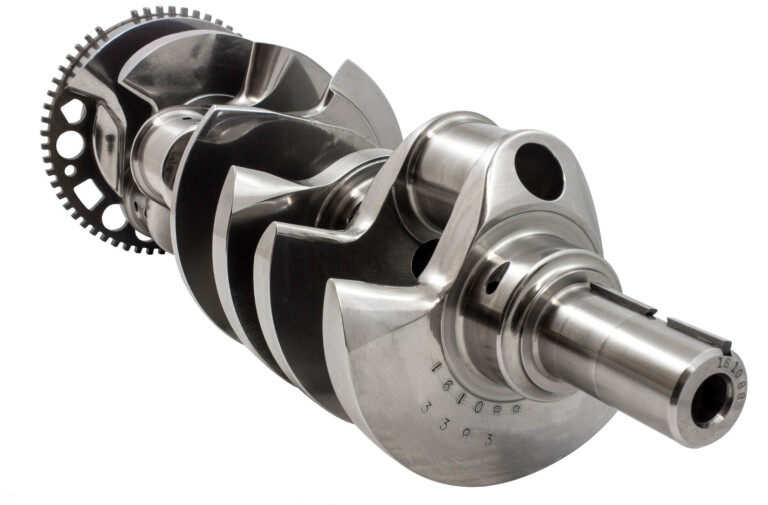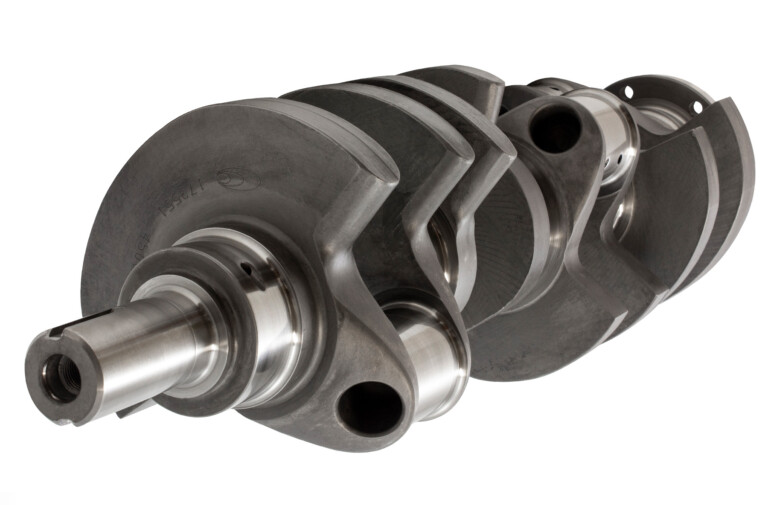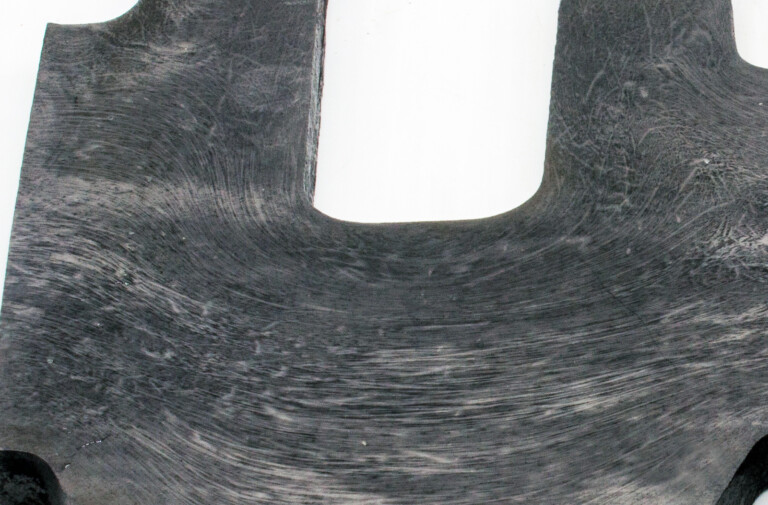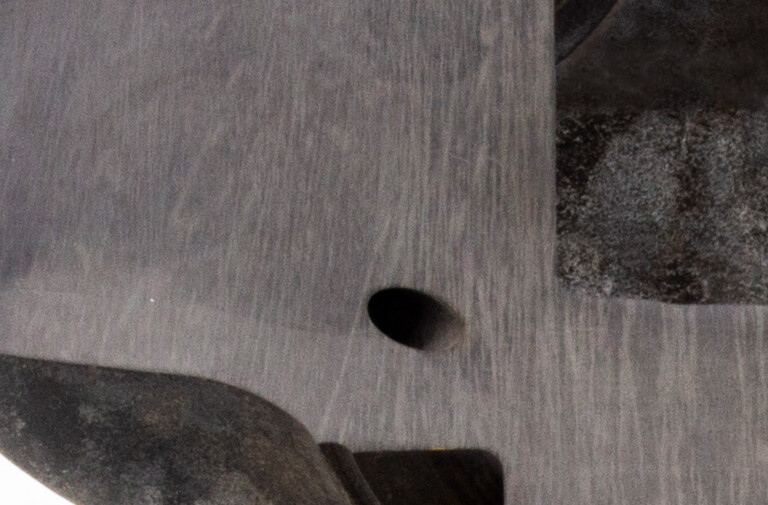When we began our conversation with Brook Piper at Callies Performance Products, our conversation humorously compared crankshafts and baking cookies. When you consider the metallurgy and machining processes involved with a racing crank, there are many variables to create a good cookie… er, crankshaft.
The left is a Callies Performance Products billet steel crankshaft, while a Ford forged 4340 Magnum crank from Callies is on the right.
4340 Crankshafts
The Forged 4340 crank is created with a process that matches its title. The “4340” references the alloy of metals, while “forging” describes the heating and compressing of the metal into forging dies on a multi-ton press.
“What qualifies as 4340 steel is a broad term,” Piper describes. “Many parts of the world struggle with material cleanliness, but it still reaches the parameters as a 4340 material. Callies acquires different raw materials from all over the world to create what we think is the purest SAE 4340 billet that goes into our forged Magnum crankshaft line.”
High heat and tons of pressure stamp the 4340 metal in a mold into its general shape, while a billet crankshaft begins as a cylinder of high-strength alloy with massive amounts of material machined away.
The Compstar line of forged 4340 crankshafts is a more affordable option; these cranks are forged overseas in Callies-owned dies, rough machined to pre-finish dimensions, and completed in Ohio.
“One key difference between Callies in-house and overseas materials is that they can’t get as much nickel in the 4340 material as we can stateside. They also have energy restrictions there which limit heat treating and nitriding processes. We can achieve more surface hardness here,” Piper describes.
Everything that makes a crank’s alloy strong is there for a reason. Nickel makes it tough, silicone provides machinability, and carbon makes it better to harden. There’s a real recipe to it. – Brook Piper, Callies Performance Products
That said, the Compstar line still has cost-effective value as a racing crank to limit at approximately 1,000 horsepower. “We are approximating our horsepower claims because we want to talk to our customers,” Piper says. ‘Many variables like car weight, drivetrain, normally aspirated/nitrous/boosted parameters may alter our recommendations.”
Side-by-side cutaways between a billet and forged crankshaft illustrate the difference between the alloys’ grain structure. The forged crankshaft…
Click Here to Read the Full Original Article at DragzineDragzine…




